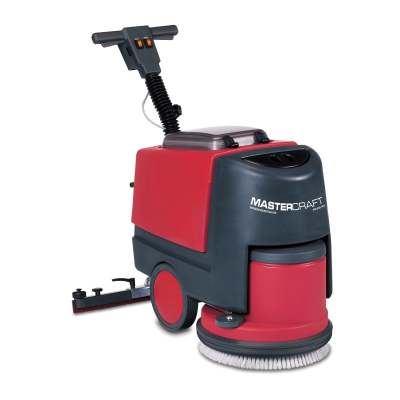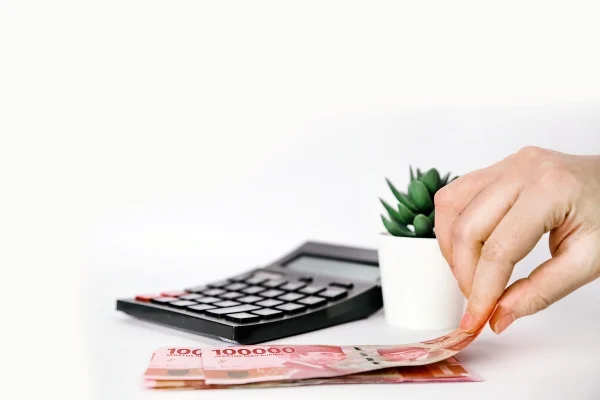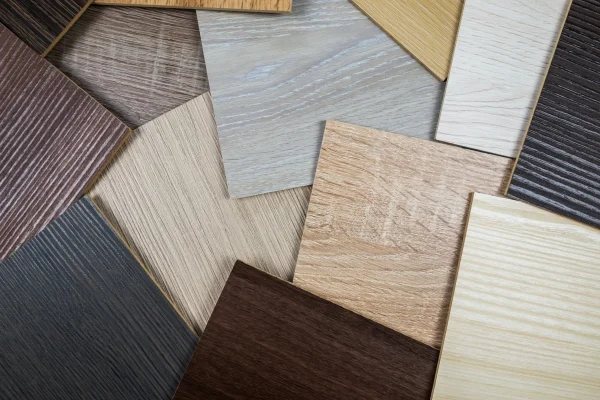Best Way to Mop Commercial Floors
Commercial floors represent a significant investment for any business, and they vary greatly depending on the amount of foot traffic they endure. Whether it's hardwood, tile, ceramic, or commercial carpet, each type requires specific cleaning methods to maintain their appearance and longevity. Understanding these differences is essential for keeping your floors in top condition.
In this guide, we’ll explore various ways to keep your commercial floors clean and well-maintained. From the right tools to effective cleaning techniques, you'll find everything you need to ensure your floors look great every day.
Why Is Deep Cleaning Commercial Flooring Important?
Floors are the first thing customers see when they enter your business, and they play a crucial role in shaping their overall impression. A clean, well-maintained floor can make a huge difference in how your business is perceived. On the other hand, dirty or neglected floors can turn potential customers away and even damage your brand’s reputation.
Since commercial floors are high-traffic areas, they’re constantly exposed to dirt, dust, and spills. This makes regular cleaning and occasional deep cleaning essential. Not only does it improve aesthetics, but it also helps prevent long-term damage and ensures a safer environment for both customers and employees.
Imagine walking into a store with sticky, muddy, or dusty floors—would you feel comfortable shopping there? Probably not. Clean floors not only enhance the look of your space but also create a welcoming atmosphere that encourages customers to stay longer and return more often.
That’s why it’s important to schedule regular cleaning sessions—both at the end of the day and before opening. This routine helps maintain a consistently clean and professional appearance, which can lead to increased customer satisfaction and sales.
Essential Equipment for Cleaning Commercial Floors
Before you start cleaning, it’s important to gather the right tools and equipment. Having the proper supplies ensures that you can clean effectively and efficiently without damaging your flooring.
Mop
A good mop is essential for any floor-cleaning task. Choose one that is sturdy and has a replaceable or washable head. Microfiber mops are ideal for hardwood floors because they don’t leave streaks, while string mops work best for tile and ceramic due to their ability to reach into corners and grout lines. Sponge mops are versatile but should be used carefully to avoid abrasion.
- Microfiber Mop – Best for hardwood floors, as it leaves no residue or streaks.
- String Mop – Great for tile and ceramic floors, especially for reaching tight spaces.
- Sponge Mop – Suitable for most floor types, but avoid using abrasive sponges on delicate surfaces.
Mop Bucket
A quality mop bucket is essential for holding your cleaning solution and allowing you to wring out the mop properly. Some buckets come with foot pedals to keep your hands clean and reduce contact with dirty water.
Cleaning Solution
The right cleaning solution depends on the type of flooring you have. Always use a product that is safe for your specific floor type. For example, hardwood requires a mild cleaner, while tile may need a stronger formula to remove grime and stains. Avoid harsh chemicals that could damage the surface over time.
Vacuum Cleaner
While not all floors require vacuuming, a vacuum cleaner is useful for removing loose dirt and debris before mopping. Look for models with steam cleaning capabilities for a deeper clean, especially in high-traffic areas. A wet vacuum is also helpful for removing excess moisture after mopping.
Wet Floor Signs
Always place warning signs when mopping to prevent slips and falls. These signs help keep your customers and staff safe and show that you're committed to maintaining a clean and safe environment.
Broom or Dust Mop
Before mopping, sweep or dust mop the floor to remove loose particles. This prevents dirt from being pushed around during the mopping process, which can make the floor appear dirtier than it is.
Degreaser
If you have a kitchen or food service area, a degreaser is essential for removing grease and oil buildup from tile floors. It helps maintain a hygienic environment and prevents stubborn stains.
 Floor Scrubber
Floor Scrubber
For tough stains or deep cleaning, a floor scrubber can be very effective. You can choose between manual or electric models based on your needs and budget.
Now that you know what tools and solutions you need, it's time to get started on cleaning your floors!
How to Mop Commercial Floors
Different types of floors require different cleaning methods and solutions. Here’s a detailed guide on how to properly mop various commercial flooring types:
Tile Floors
Tile is a popular choice for commercial spaces due to its durability and ease of maintenance. However, it can be slippery when wet, so using a non-slip cleaner is important. Grout lines also require special attention during cleaning.
To clean tile floors, start by sweeping or dust mopping to remove loose dirt. Then, mix your chosen cleaning solution with water in a bucket and dip your mop. Wring it out until it's damp, not dripping, and mop in a back-and-forth motion. Let the floor air dry or use a dry mop to speed up the process.
How to Clean Tile Grout
- Mix equal parts baking soda and hydrogen peroxide with a tablespoon of dish soap. Alternatively, use white vinegar and water for a natural option. Pour the mixture into a spray bottle and apply it to the grout.
- Let the solution sit for about 30 minutes to break down the grime.
- Scrub the grout thoroughly with a stiff brush to remove dirt and stains.
- Rinse the grout with warm water to remove any remaining residue.
How to Clean Tile Floors
- Sweep or dust mop the floor to remove loose dirt and debris.
- Mark off the area you plan to mop to avoid stepping on already cleaned sections.
- Prepare a mild cleaning solution suitable for tile. Avoid strong acids or alkaline cleaners that could damage the surface.
- Mop in one direction. If the tiles have visible grout lines, use a string mop instead of a sponge mop to avoid excessive moisture.
- Dry the floor with a microfiber mop or let it air dry completely.
Hardwood Floors
Hardwood floors are a classic choice for many businesses due to their elegance and durability. However, they require careful cleaning to avoid scratches or damage. Use a soft-bristled mop or microfiber pad to avoid leaving marks.
How to Clean Hardwood Floors
- Sweep or dust mop the floor to remove loose particles.
- Start mopping from the farthest corner of the room and work your way outward to avoid stepping on cleaned areas.
- Use a hardwood-specific cleaner to avoid damaging the finish. Never use too much water, as it can seep into the wood and cause warping.
- Mop in one direction using a microfiber mop. Avoid using string or sponge mops, as they can hold too much moisture.
- Allow the floor to dry completely and consider applying a layer of floor wax for added protection.
Carpet Floors
Carpet adds warmth and comfort to a space but requires more frequent cleaning and maintenance. Regular vacuuming and occasional deep cleaning are essential to keep it looking fresh and lasting longer.
How to Clean Carpet Floors
- Vacuum the carpet in one direction to lift dirt and debris from the fibers.
- Treat any stains with a spot cleaner according to the manufacturer’s instructions. Repeat if necessary.
- Steam clean the carpet to remove deep-set dirt and refresh the fibers. Ensure the water being extracted is clear at the end of the process.
Â
Vinyl Composition Tile
Vinyl composition tile is an affordable and durable option for commercial spaces. It’s easy to install and maintain, making it a popular choice for many businesses.
How to Clean Vinyl Floors
- Sweep the floor to remove loose dirt and debris before mopping.
- Mix a mild detergent with water to create a gentle cleaning solution.
- Avoid over-saturating the mop, as this can leave the floor wet rather than clean.
- Let the floor air dry or use a clean microfiber mop to speed up the drying process.
Hiring Professional Cleaners
If your business is large or your floors are particularly difficult to clean, hiring professional cleaners can save you time and effort. Professionals have the experience and equipment needed to handle even the toughest cleaning tasks, ensuring your floors are left in excellent condition.
However, if you run a small business, you might prefer to handle the cleaning yourself. Just make sure you understand the specific needs of your flooring type and follow the correct procedures to avoid damage.
When hiring professionals, always verify their experience and check references. Being present during the cleaning process can also help ensure that everything is done correctly and that any issues are addressed immediately.

Budget-Friendly Cleaning Tips
You don’t have to spend a lot to keep your commercial floors clean. There are many cost-effective options available, including homemade cleaning solutions that can be just as effective as store-bought products.
Here are some simple and affordable ways to keep your floors looking great without breaking the bank:
Make Your Own Cleaning Solution
Many people opt to make their own cleaning solutions using common household items like vinegar, baking soda, and dish soap. These ingredients are not only inexpensive but also eco-friendly and safe for most floor types.
For example, mixing equal parts white vinegar, rubbing alcohol, and water with a small amount of liquid dish soap creates a powerful yet gentle cleaner for tile and vinyl floors. This solution can effectively remove dirt and grime without the harsh chemicals found in commercial products.
DIY Hardwood Floor Cleaner
For hardwood floors, a simple DIY cleaner can be made by mixing one gallon of water with three-quarters cup of olive oil and half a cup of lemon juice. This solution not only cleans the floor but also gives it a natural shine and a pleasant citrus scent.
Final Thoughts
Keeping your commercial floors clean doesn't have to be complicated or expensive. With the right tools, cleaning solutions, and techniques, you can maintain a clean and inviting space that impresses customers and protects your investment.
Whether you choose to do it yourself or hire professionals, always remember to use the correct products for your floor type and follow safety guidelines. Regular cleaning and maintenance will ensure your floors remain in excellent condition for years to come.
So, take a look at your floors today and start cleaning! A little effort now can go a long way in keeping your business looking its best.
 hbspt.cta._relativeUrls=true;hbspt.cta.load(7667689, '68632c8b-76e2-4d28-89fe-a2b1fcda8aa4', {"useNewLoader":"true","region":"na1"});
hbspt.cta._relativeUrls=true;hbspt.cta.load(7667689, '68632c8b-76e2-4d28-89fe-a2b1fcda8aa4', {"useNewLoader":"true","region":"na1"});
HEIGHT ADJUSTABLE: No need to worry about storing tall and bulky items on the shelves of our storage rack. There is no fixed height between each shelf and it is adjustable at 1" interval.
STABLE: This storage rack has four legs with leveling feet for stability no matter where you need to station it.
DURABLE: The steel construction and chrome finish of our rack make it resistant to rust and corrosion. The built is sturdy and each shelf can hold up to 200 pounds, giving you more weight limit.
EASY TO ASSEMBLE: Our steel shelf organizer is heavy-duty, but it is easy to set up. The shleving unit features 16 connectors which help your storage intact without using any screws. No assembly tools needed.
EASY TO CLEAN: We do not want our storage to look old and dusty. Good thing, its open wire design helps avoid dust build-up and provides good air circulation. Just wipe it with a cloth and your shelf will be looking good as new!
Storage Shelves,Metal Storage Shelves,Garage Storage Shelves,Pallet Storage Shelf Rack
Dalian CS Logistics Technology Co., Ltd , https://www.dlcsem.com

